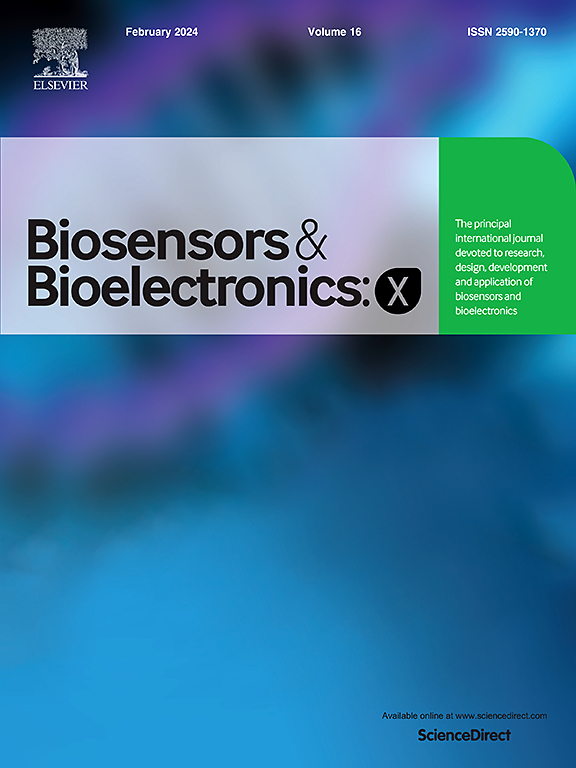Fiber-tip photonic crystal for real-time referenced biosensing in serum
IF 10.61
Q3 Biochemistry, Genetics and Molecular Biology
引用次数: 0
Abstract
Fiber optic sensors have become increasingly well-established due to the many advantages they provide such as immunity to electromagnetic interference, multiplexing capabilities, and remote sensing. The coupling of light with a transducer at the tip of the optical fiber enables the detection of physical and biological parameters. 2D photonic crystals (PhC) can be designed to feature guided-mode resonances (GMR) characterized by a strong electric field at the PhC surface, providing a suitable tool for the detection of local refractive index variations (e.g. biomolecule adsorption). Here, we demonstrate the use of a PhC transferred to the tip of a single-mode fiber for biosensing. The control of surface chemistry provides a sensitive platform for the molecular recognition of antibody biomarkers. By integrating the fiber in a continuous flow platform, the real-time detection of anti-IgG in undiluted serum was achieved, with a limit of detection down to 60 pM. Moreover, the use of a reference channel is demonstrated to correct for signal drifts in real-time due to changes in bulk refractive index. These referenced fiber-tip PhC biosensors may pave the way for fluidic integrated systems in environmental, industrial, and healthcare applications, and open up the possibility of biosensing in the human body by integrating them into catheters.
用于血清实时参考生物传感的光纤尖端光子晶体
光纤传感器已经变得越来越完善,因为它们提供了许多优点,如抗电磁干扰、多路复用能力和遥感。光与光纤尖端的换能器的耦合使物理和生物参数的检测成为可能。二维光子晶体(PhC)可以设计成具有在PhC表面具有强电场特征的导模共振(GMR),为检测局部折射率变化(例如生物分子吸附)提供了合适的工具。在这里,我们演示了将PhC转移到单模光纤的尖端用于生物传感。表面化学的控制为抗体生物标志物的分子识别提供了一个灵敏的平台。通过将纤维集成在连续流动平台中,实现了未稀释血清中抗igg的实时检测,检测限低至60 pM。此外,还证明了使用参考信道可以实时校正由于体折射率变化引起的信号漂移。这些参考纤维尖端PhC生物传感器可能为环境、工业和医疗保健应用中的流体集成系统铺平道路,并通过将其集成到导管中,开辟了在人体中进行生物传感的可能性。
本文章由计算机程序翻译,如有差异,请以英文原文为准。
求助全文
约1分钟内获得全文
求助全文
来源期刊

Biosensors and Bioelectronics: X
Biochemistry, Genetics and Molecular Biology-Biophysics
CiteScore
4.60
自引率
0.00%
发文量
166
审稿时长
54 days
期刊介绍:
Biosensors and Bioelectronics: X, an open-access companion journal of Biosensors and Bioelectronics, boasts a 2020 Impact Factor of 10.61 (Journal Citation Reports, Clarivate Analytics 2021). Offering authors the opportunity to share their innovative work freely and globally, Biosensors and Bioelectronics: X aims to be a timely and permanent source of information. The journal publishes original research papers, review articles, communications, editorial highlights, perspectives, opinions, and commentaries at the intersection of technological advancements and high-impact applications. Manuscripts submitted to Biosensors and Bioelectronics: X are assessed based on originality and innovation in technology development or applications, aligning with the journal's goal to cater to a broad audience interested in this dynamic field.
 求助内容:
求助内容: 应助结果提醒方式:
应助结果提醒方式:


